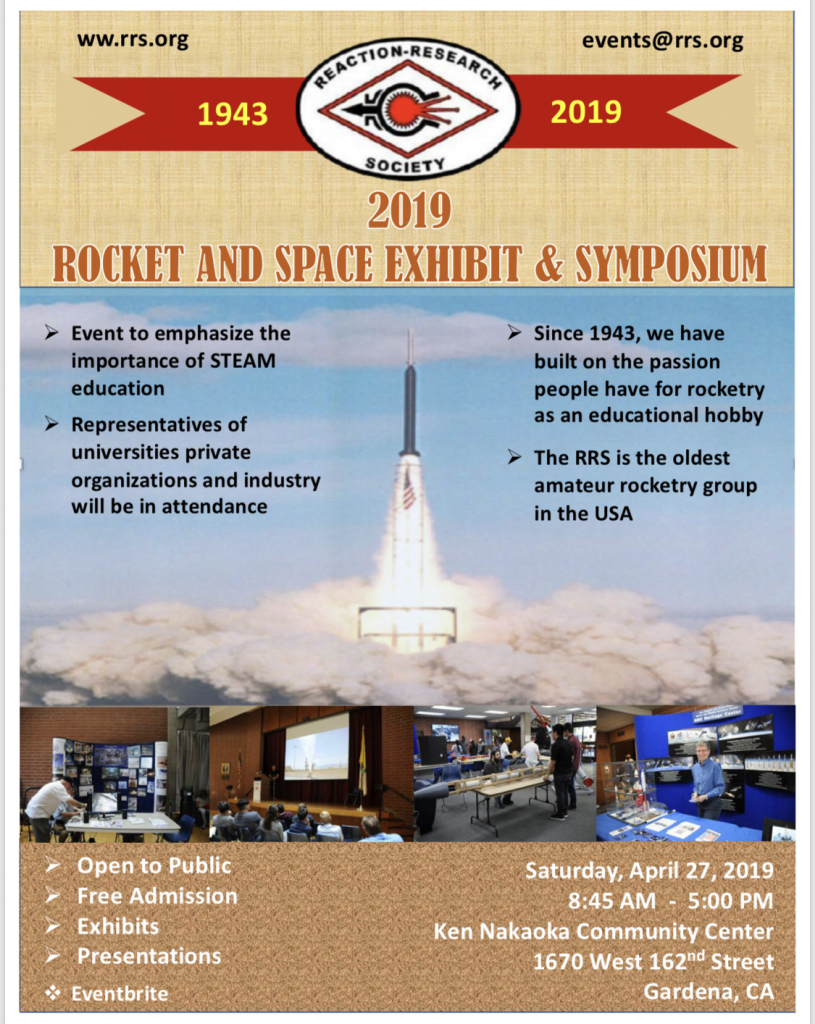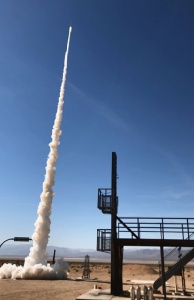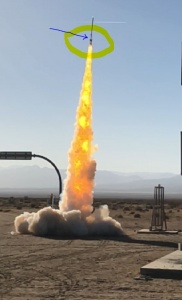by Dave Nordling, Secretary, Reaction Research Society
The Reaction Research Society (RRS) held it’s monthly meeting on November 8, 2019 at the Ken Nakaoka Community Center in Gardena, California. The society had a full agenda plus our annual nominations for the executive council. Frank Miuccio attempted to establish a teleconference at the meeting to connect our director of research, Richard Garcia, and an outside organization that wanted to address the society. This teleconferencing was successful and the society will consider having more of these to help bring in more participants on special topics.
[1] Treasurer’s report on membership and dues status
The RRS treasurer is conducting a review of our membership roster to not only update our records with the many new members that have joined us this year, but also to determine the dues status for each. Like in all non-profit organizations, regular annual dues payment is essential to keeping the society funded for the many projects we do and are planning. Upgrades at the MTA are also impacted if our membership does not keep their dues payments current.
Chris’s report was not ready at this month’s meeting, but he will be soon notifying some of our delinquent members that they need to keep their dues paid to remain in active status. It is the duty of all RRS members to keep their contact information current with the RRS treasurer. The society can not be responsible for missing communications if our members do not do their part by making communication possible. Also, members who are not current in their dues payment risk losing their active status with the society.
treasurer@rrs.org
I have always paid my dues to the society on January 1st of each new year. This greatly simplifies the process and I need no reminder to do so. Membership dues ($40 USD per year) to the society can be paid through the “Donate” button on the RRS.ORG website which links to Paypal.
We remind all of our donors and those paying dues in this manner to include your name in the “Notes” section along with the purpose of your donation. Without including your name, the RRS can not tell who has paid their dues.
The RRS.ORG website has more information on this subject. For any questions, please contact the RRS treasurer.
[2] Update on the next RRS MTA launch event with LAPD CSP and 99th Street Elementary School
Frank, Larry and Osvaldo are in the middle of another class, this time with 99th Street Elementary in partnership with the Los Angeles Police Department (LAPD) Community Safety Partnership (CSP). The class is going well and the final launch event is still planned for Saturday, December 7, 2019.
At this same launch event, we are also planning to host the University of Southern California’s (USC) Rocket Propulsion Laboratory (RPL) with the launch of their latest solid motor powered rocket. USC has been making continuing progress even after their landmark flight to be the first university-built rocket to break the von Karman line into space.
[3] Preparations for the 2020 RRS symposium
With the society approving the symposium for our fourth year in a row, Frank is working with the Ken Nakaoka Community Center to establish the date. Tentatively, the 2020 RRS symposium will be held Saturday, March 28, 2020. The society has decided to try to hold the symposium earlier in the year to avoid the onset of the summer heat which makes the event very uncomfortable in the absence of climate control at the Ken Nakaoka Community Center.

More information on this subject will be posted as it develops. Our symposium coordinator for the 2020 event will again be our society vice president, Frank Miuccio.
vicepresident@rrs.org
[4] RRS solid propellant making classes at the MTA
The RRS has been approached by an outside organization about conducting solid propellant motor making classes. Many years ago, the RRS held a few of these events which became very popular. The RRS has not yet decided if we will restart these classes, but a group is examining the possibility and will report back to the society on the viability of such a project.

[5] 2020 Constitutional Committee progress report
pending… carried over from October 2019 meeting report
[6] Annual elections for the RRS executive council
As required by our Constitution, the RRS appoints an election chairman to oversee and execute the process of nominations and balloting for each of the four executive council offices for new terms starting in the new calendar year. Larry Hoffing, again, agreed to be our election chairman for this cycle.
Nominations were held and were open to our administrative membership. Nominations were received and our election chairman will be sending out ballots by email. This is another good example of why all members should keep their contact information current and remain in active status with the society. Balloting will be closed prior to the next monthly meeting in December and the results announced at that meeting.
[7] CSFM committee on amateur rocketry
Last month, the RRS and Mark Holthaus of the Friends of Amateur Rocketry (FAR) met to discuss a list of proposed changes to the California State Fire Marshal’s (CSFM) definitions that govern amateur rocketry. This small group was intended to be made from active amateur rocketry groups around California to help advise the CSFM subcommittee on changes that would help improve regulation of amateur rocketry and make needed clarifications to help all groups continue to operate safely and legally.

The RRS and FAR held a second meeting at the Ken Nakaoka Community Center which included David Reese of the Rocketry Organization of California (ROC). ROC members, Chris Kobel and David Reese have been very helpful in providing helpful improvements to how the certain classes of rocketry are defined.
This amateur rocketry committee will be presenting their collective suggestions to the Fire Marshal in early December 2019. The RRS, FAR, ROC and the rest of the amateur rocketry groups in California are glad to assist the CSFM office in making these suggested updates.
[8] Social media updates
There was no report from Alastair Martin and/or Bill Janczewski this month for social media improvements for the Reaction Research Society. We hope to have more to discuss in the next month on this regular topic. As always, members are welcome to offer their advice and proposals to either or both of our media coordinators.
Alastair and I did have a conversation about expanding our following on Instagram. We will continue to show the highlights of our events and the people involved, but I hope to bring more technical content which seems to be our primary source of interest.
See the RRS on Instagram: reactionresearchsociety
Alastair and his production company, Production Tribe LLC, has created yet another podcast in the “Before SpaceX” series with special guest, rocket propulsion expert, author and RRS member, James R. “Jim” French. RRS secretary, Dave Nordling, and RRS director of research, Richard Garcia, supported this excellent discussion about the American Rocket Company (AMROC), a space start-up company in the 1980’s and 1990’s. The show is still in editing and will be posted very soon his website.
https://podcasts.apple.com/us/podcast/rocket-talk-radio/id1474556513
[9] Compton Comet STEM club formation and program
Several students from the Compton College STEM club attended the November meeting of the RRS along with their advisor and fellow RRS member, Kent Schwitkis. Jamie Alvarez, the STEM club president was in attendance. The Compton Comet is the project name for the liquid rocket projects that the Compton College team is working on. There are about 20 students in the group and the RRS is glad to support this team and the other university teams looking to compete or at least expand their range of practical skills.
The Compton Comet team has been holding meetings at Tomorrow’s Aeronautical Museum (TAM) at the Compton/Woodley airport. They are planning a few trips to inspect launch and additional hardware assembly sites and make a report back to the RRS at the December 2019 meeting. RRS member, Waldo Stakes, has also been an important part of this program.
The STEM club is having another Estes rocket competition later this month. The first of these events was very successful. Part of the experience is getting practice with the simpler rockets and using OpenRocket simulation software to make and verify predictions.
IN CLOSING
RRS members, Frank Miuccio, Alastair Martin and Kent Schwitkis contributed to this report. The next RRS meeting will be December 13, 2019. If there are any corrections or additions to make for the monthly report, please contact the RRS secretary.
secretary@rrs.org












































